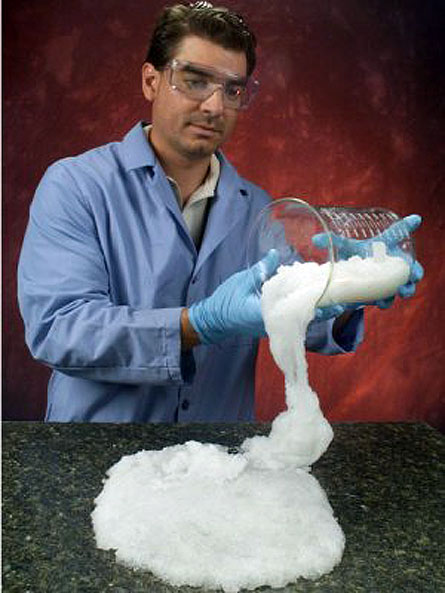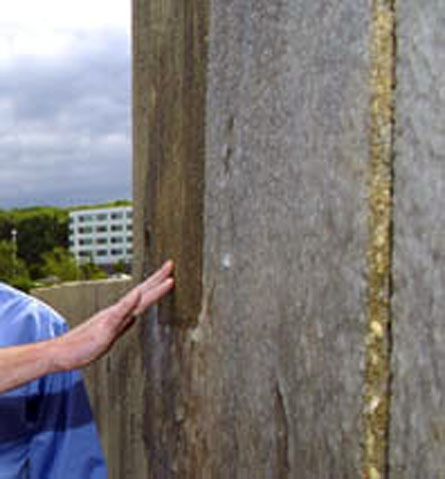Supergoo Erases ‘Monument-al’ Nuclear Fallout
Physicists are designing decontamination strategies to remove radioactive debris that might adhere to buildings, such as Washington’s many monuments. Their key ingredient: an off-the-shelf, super-soaker gel, the type used in potting soils (to parse out water frugally between infrequent waterings) and in those ostensibly leakproof, disposable baby diapers.


Among scenarios anticipated to call for such a cleanser is the detonation of a dirty bomb in the nation’s capital. As any plume of radioactive debris that it emitted got jostled by winds, particles would start glomming onto marble, brick and concrete structures around town.
Heaven forbid that ever happens. But if it does, radiological-cleanup crews now have the recipe for a novel treatment — one that won’t require etching off the porous surface of architectural treasures.
In preliminary tests, the new treatment appears to work well on ceramic tiles having the porosity of the marble they’re meant to simulate, says Michael Kaminski, the principal materials engineer in Argonne National Laboratory’s Chemical Sciences and Engineering Division. “On those [tiles] we can get 99-plus percent removal in two applications” of the treatment, he says.
A single treatment of concrete might remove 80 percent of radioactive contaminants on the first pass, his team’s data show. If the researchers treat it again, Kaminski says, radioactive removal could reach 90 percent.
And then there’s brick. “That one’s a work in progress,” he told me earlier this week when I met with him on a visit to Argonne. “I don’t want to give actual numbers [for brick],” he says, “but removal rates are poor — lower than 30 percent.”
It all has to do with the porosity of a surface. If tiny nooks and crannies give glommed-on debris a place to tuck away, removal efficacy drops precipitously.
The Department of Homeland Security initially put out calls to researchers for projects to explore radioactive-cleanup techniques that might be developed in a year or so to aid first responders should a nightmarish situation arise. While mulling over the supergels used in baby diapers, Kaminski thought there must be a way to apply them in a unsaturated concentration to wet buildings, perhaps through a fire hose. As the viscous gel attempted to suck in moisture from a building’s surface, it would also pick up any deposited radioactive contaminants.
Or so the thinking went, some five years ago.
But figuring out how to wet a building — and then apply a goopy gel on top of that that will stay in place until vacuumed off — ended up a bigger challenge than at first anticipated. The initial wetting solution needs to contain ions that will loosen the radioactive contaminants and then move into their place. The recipe that Kaminiski’s team ultimately developed is completely safe. “In fact,” he says, “you could literally eat some of the formulations that we’ve made to take [radioactive] cesium off of a wall.”
His creations were commissioned by the Defense Department, which has asked him not to divulge their precise recipes. Suffice it to say, however, they use common, inexpensive ingredients that are not acidic, don’t cause fumes, and would pose little hazard to first responders.
Ideally, the recipe should be tweaked, depending on the porosity of the building materials on which the treatment will be used — and the type of radioactive contamination present. And that’s what the Argonne group is doing now. It initially focused on cesium as the model contaminant. A few months back, it began investigating actinide elements — those ultra-heavy radioactive ones at the bottom of the periodic table whose chemical behavior can be quite quirky. The researchers are also moving on to marbles and other surface materials.
It must be very disturbing for the team members to dwell on why their recipes are needed. Then again, I’m glad to hear that DHS and DOD are thinking about the unthinkable — and how to help society and even its cultural icons survive such traumatic events.






